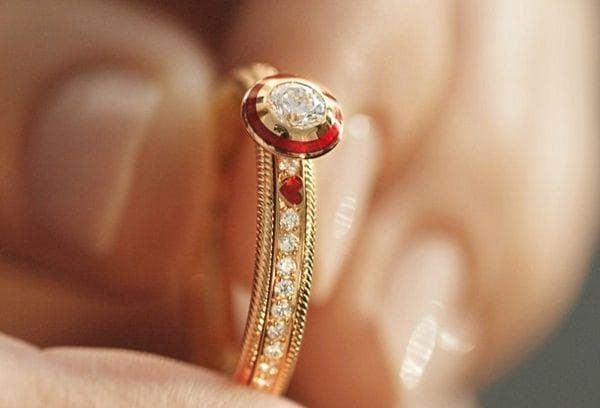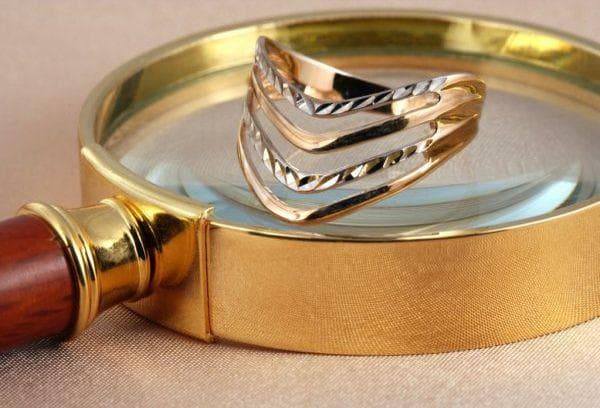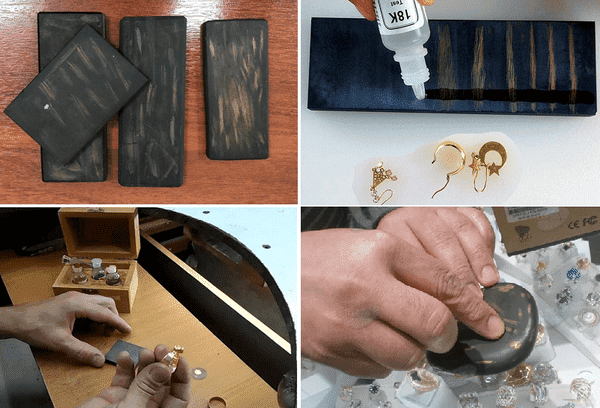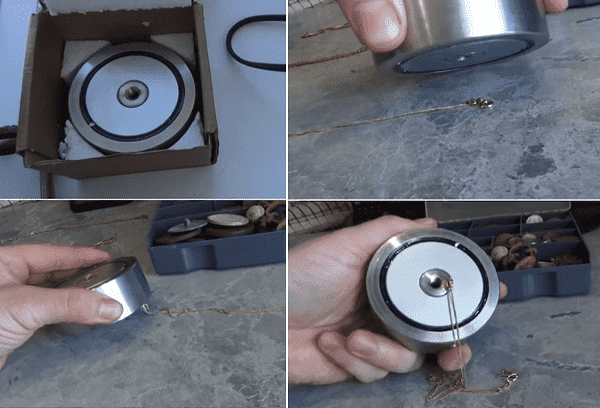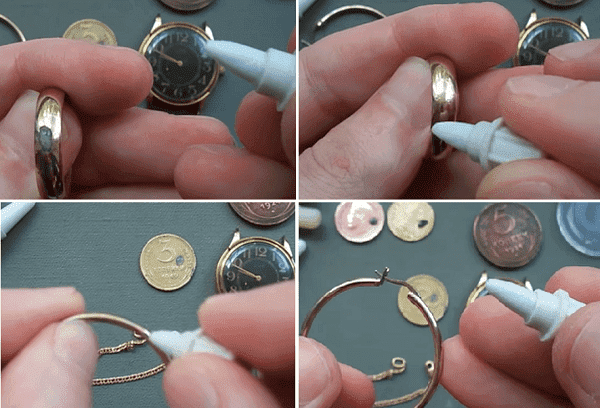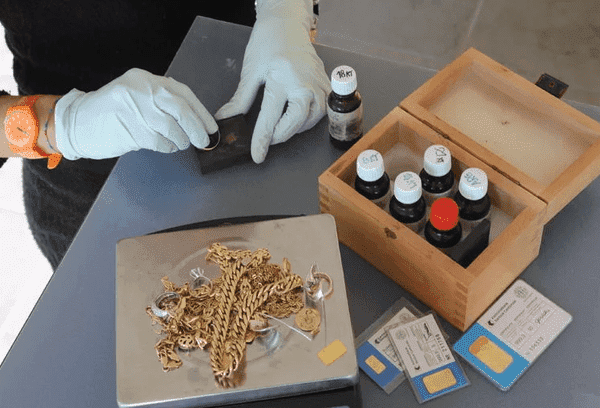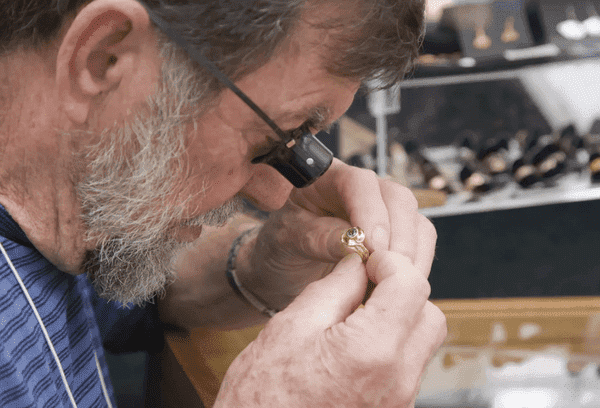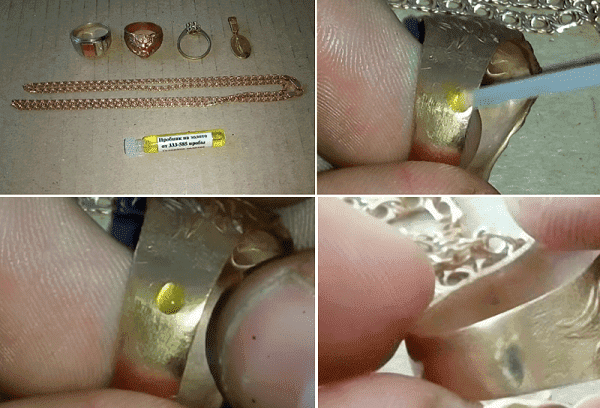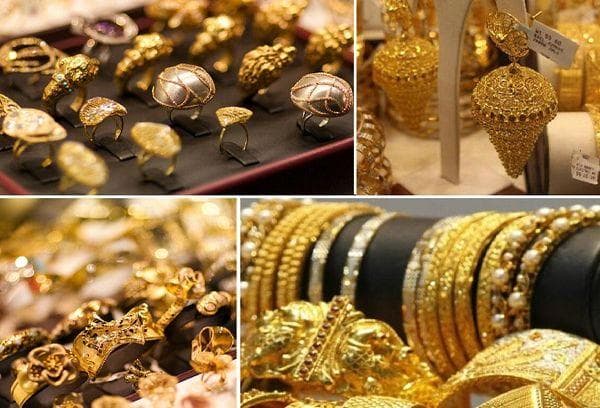How to determine gold and its purity in simple ways no worse than in a pawnshop
Content:
When choosing jewelry without tags and documents from a private person, the buyer wants to know for sure that he is paying money for precious metal, and not a fake. Simple chemical reactions will help you test gold at home to ensure the authenticity of the product. There are also ways to distinguish gold from similar alloys by indirect signs.
Ways and means
They were able to determine the composition of precious metals even before complex analyzers were invented. There are simple but effective methods for testing the gold content of alloys. It is most difficult to distinguish gold-plated products, but even in this case you can choose a method.
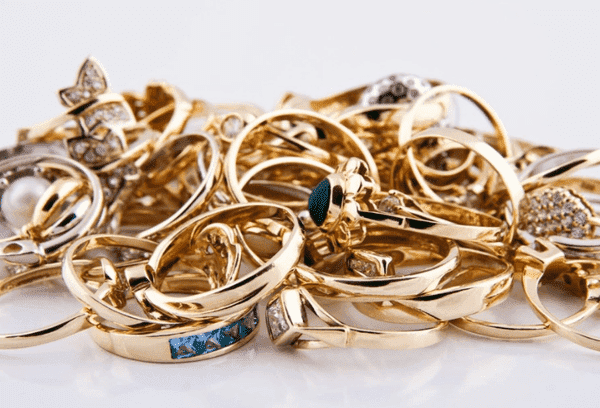
Authentication is based on simple chemical reactions, using reagents that can be found in any kitchen or medicine cabinet. They also take into account the physical properties of the substance. These tips will come in handy when purchasing jewelry without accompanying documents.
Smell test
It's worth sniffing the product. A real precious metal should not emit a scent. If you can smell it, it means it's jewelry. Silver and its alloys can also smell like iron.
Some materials used for inexpensive accessories emit odors during oxidation. It is enough to vigorously rub the object in your hands. You can pre-moisten it with plain water.
Identification by sound
You can check the precious metal by the sound of it falling on a hard surface (laminate, countertop, tile). If the ringing is dull and low, it means there is emptiness or foreign objects inside the ring or earring.
This method is not 100% reliable, because not everyone has keen hearing. But for comparison, you can throw a ring into a glass and listen to the ringing sound it makes. Products made from other types of metal do not sound such pure notes.
Testing in light and shadow
Jewelers make jewelry from 3 types of gold - yellow, white and red (pink). The shade of the noble alloy depends on other metals added to pure gold to make it harder. Such satellite metals are called alloys:
- Metal without impurities of bright yellow color.
- The white tint is obtained by alloying with silver, zinc, palladium and other elements.
- Copper as an alloying element produces a pink color.
Regardless of the color, if you look at the jewelry in different lighting (in the shade and in the sun), you will notice that it always shines. The brightness of the shine depends on the gold content in the alloy, which is designated as a breakdown.
Joints and stamps
Joints, numbers and other decorative elements must be clear, especially the proof stamp. It is worth taking a photo of the stamp and examining it carefully under magnification or using a magnifying glass.
There is often a difference in color between the individual links and the lock in the chain. Craftsmen use solder of a higher standard to make connections, which means the color will be slightly different. This is fine.
Rye bread crumb
You need to stick the moistened crumb of rye bread around the golden object. Then wait for the bread slurry to dry completely. After breaking the crust, pull out the ring and inspect its trace.
If dark spots appear inside the crumb, this indicates oxidation of the metal. Noble metal does not oxidize even in alloys. But the method will not work for fake gold-plated silver.
Ceramic testing
You can run the jewel across tiles or porcelain. There should be thin traces of gold on their surface. If they are black or gray, they are fake.
Don't press too hard on the item. It is better to “draw” with the clasp or the back of the product. This way, the small scratches that inevitably appear with this method will not be noticeable.
Iodine Trace Analysis
To determine gold using iodine at home, you will need a cotton swab, a plate, alcohol, a cloth and iodine. The product must first be wiped with alcohol.
Dip the stick into the iodine solution and apply it to the object. If the trace is light in color, it is brass or copper. If the spot is dark, it is gold. After the experiment, polishing is necessary to remove marks.
Reaction with vinegar
Gold does not react chemically with vinegar. An object of suspected gold is placed in a container containing this substance. Fake precious metal will change color. Vinegar can be safely used to clean any stains from gold items.
When working with concentrated acid, it is worth remembering safety precautions.Vapors and splashes of the substance irritate the mucous membranes and cause skin burns.
Special reagents
Gold is checked at a pawnshop using a silicon slate (touch stone). After contact, a little precious metal remains on the stone, which reacts with the acid. If the trace has evaporated, it is a fake; if it remains, it is real gold.
Determination by magnet
Gold is diamagnetic, meaning a magnet does not affect it in any way. If the product attracts attention, then it is a fake. A magnetic bar of sufficient size is required; a souvenir bar is not suitable for this purpose.
lapis pencil
A lapis pencil based on silver nitrate on gold should not leave marks. Other metals react with it, causing dark spots to appear. This method is not suitable for fake silver.
If it's difficult to determine for yourself
To accurately determine the sample and distinguish gold from a fake, you can seek help from specialized laboratories where assay analysis will be carried out. This study is paid and requires special, sophisticated equipment.
Go to a pawn shop
Pawn shops use several verification methods. One of them is to study a sample that contains symbols. The numbers 375, 500, 585, 750 indicate the gold content in the product and are called fineness. There is also a name plate - the manufacturer's imprint. .
It is not so easy to falsify this data; an experienced appraiser will be able to distinguish a forgery from this data. Products up to 5 grams are checked with a touchstone and other methods that require certain knowledge and skills.
Go to the jeweler
Professional jewelers have at their disposal special instruments that will help not only identify the precious metal, but also find out its sample.Such a check costs on average about 1000 rubles.
How to determine a sample
You can determine the sample at home. To do this, you need to prepare gold chloride, alcohol, and a pipette. The product is thoroughly cleaned of dirt, grease, and fingerprints. To do this, wipe thoroughly with a cloth moistened with alcohol. After the procedure, the alcohol should completely evaporate. Using a pipette, drop a small amount of gold chloride and apply it to the object being examined. Leave for five minutes.
For an alloy with a purity lower than 585, the stain from the solution will turn brown. Brass and an alloy of silver and copper will turn black in a couple of seconds. Gold 585 and higher will remain unchanged. If you need exact numbers and you won’t be able to find them out at home, you should contact a laboratory.
How to distinguish gilding from gold
Gilding is a thin layer of gold plating on jewelry made of metals and alloys. It is applied to silver or jewelry steel to give jewelry a pleasant yellow tint. The items are visually indistinguishable from gold, but are much cheaper.
The disadvantage of gold plating is that it comes off quite quickly, especially if the product is worn constantly. At the same time, gilding can be easily restored in a jewelry store. To make gold plating last longer, you should avoid contact with water, cosmetics and perfume. You should also avoid wearing gold-plated jewelry while playing sports. You can distinguish gold from gilding using iodine.
How gold is counterfeited
There are two types of fake gold. The first type is alloys for jewelry, which have a coating of expensive metal on the surface. There is a more complex type of counterfeit, which is more difficult to recognize. The lock is made of gold, and the product itself is made of another metal.The stamp is placed on the clasp; the rest of the product is unsampled.
“Gypsy gold” (samovar gold, randol) - yellow copper or brass, coated with a thin layer of real gold, contains a small amount of beryllium. It dissolves well in almost all acids. Such products shine brightly without losing color over time.
“Gypsy gold” is used in industry (aviation, automotive). Randoli is used to make jewelry, watches, decorative items, coins and other items. Randole corresponds to approximately 375 fineness of the precious metal.
Often gold is counterfeited with another metal - tungsten. It has a similar density - 19.3 g/cm3. A blank is created from tungsten, which in further production is coated with noble, expensive metal or gold plating. Such deception can be revealed by drilling a small hole in it and through it you can look at the internal contents of the object and understand what you are dealing with.
Red brass. This is a well-known and popular metal used by unscrupulous jewelers. Visually identifying a fake in this case is extremely difficult even for experienced specialists and appraisers. This alloy consists of copper (90%) and zinc (10%). Other metals are added to the alloy to determine its properties, including color.
Tips for buying gold
Gold is the softest metal that can be deformed by biting. Aluminum can behave the same way. There should be no scratches on a gold item. If you purchase a used product and it is in perfect condition, it’s worth considering.
FAQ
How long should I keep the jewelry in vinegar?
Place the product in a glass of vinegar for 10 minutes. The fake will darken, but the gold will remain the same.
What happens if you keep a product in vinegar for several hours?
Real gold is not soluble in acid, but gilding is partially soluble.
How to check products with stones?
Jewelry with stones should not be tested with vinegar. Pearls and other materials may lose their original appearance.
What vinegar should I use to test jewelry?
You can use apple, table, balsamic, as well as vinegar essence. It is worth remembering that a product not made of precious metal can become completely unusable.
What is the most reliable verification method?
Checking jewelry for authenticity with a spectrometer is the most reliable. It does not require filing or deforming the product in any way. But such a device is only available in a specialized laboratory, and working with it requires certain knowledge and skills. This device uses x-rays, under the influence of which the atoms of gold and other metals behave in different ways.
